Introduction
2020 ends with the world looking forward to the end of the COVID-19 pandemic while still grappling with the disruptive changes the virus caused to all facets of society. Businesses were forced to accelerate their digital transformation plans to maintain operations. The economic fallout of restrictive lockdown measures meant that the digital channel was the only customer touchpoint available. Organizations that couldn’t adapt either put operations on pause or shut their doors permanently. Driven by demand, many technology trends accelerated. Machine learning algorithms continued to improve, Internet of Things (IoT) devices became more numerous, infrastructure needs shifted quickly, and data-driven business operations multiplied.
Many organizations responded by relying on technologically mediated environments to continue operations. Employees met from their homes via videoconference, students used online learning management systems to complete their school curriculum, and governments rushed to put more services online.
With technology playing a key role for all organizations just to maintain daily activities, IT was thrust into a critical function. No longer was the IT department supporting capabilities lower down the value stream – it was now core to delivering on the organization’s value proposition. Given the transitional period that’s likely ahead, with the pandemic coming to an end and with all the other externalities that could disrupt operations, IT’s role remains critical. Organizations that want to avoid disruption from the next crisis will need IT to support capabilities to plan for change and learn quickly. IT must focus on accelerating speed to value and enable flexibility and rapid redeployment of resources.
The pandemic highlighted how organizations are vulnerable to change from many contexts: Sustainable goals need digital solutions, data sovereignty requires infrastructure flexibility, machine learning will create new business categories, lockdowns pushed organizations to a distributed model, the digital skills gap requires that more voices get involved with developing technology and economic downturns demand new business models. These six trends will help organizations thrive through change:
- Distributed Autonomous Organizations
- Self-Sovereign Cloud
- Digital Sustainability
- Machine Learning by Design
- Citizen Dev 2.0
- Venture Architecture
The first three trends focus on capabilities and structures that can help your organization absorb the impact of disruptive market change. Lessen the blow of a crisis by strengthening all elements of your system and distributing the impact equally throughout.
The latter three trends of our report focus on adapting to disruptive change. Identify the gap between your current operations and where they could be in the new scenario, and make a plan to improve your capabilities to achieve that vision.
For each technological trend we will summarize what it consists of, its context, the benefits and uncertainties that it would bring to human beings and some recommendations for its adoption.
1. Distributed Autonomous Organizations
Collaborating without a central hub and taking control over the workday.
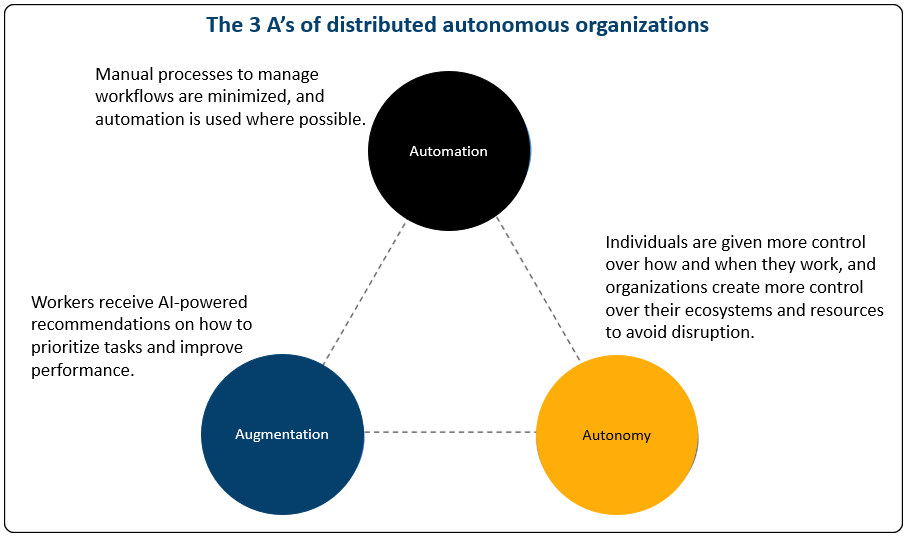
For the past 200 years we’ve embraced the work hub model. COVID-19 disrupted that on a major scale. Companies have been able to distribute work resources to their workers effectively.
In the future, AI could guide employees in properly prioritizing their days and performing the right actions at the right time. AI could also play a role in automating the “busywork” that tends to fill our work hours, allowing talented workers to focus on the value they are really hired to deliver. Employee performance could also be evaluated in part by AI, allowing for a leaner middle management layer (Minahan). Companies that have adapted to remote work scenarios for the pandemic will find new opportunities to access talented workers. Instead of hiring workers within commuting range of an office or asking them to relocate to take a job, organizations can onboard employees from anywhere in the world and connect them to virtual collaboration platforms. In professions that are highly regulated by governments or require certification from professional bodies, there will be more friction in overcoming regional boundaries. But distributed ledger technology solutions give individuals or employers more autonomy in verifying credentials (HIT Consultant).
Human Benefits
Trust: Remote workers feel trusted by their organizations when the emphasis is on delivering results and meeting goals. Trying to recreate workplace surveillance through digital means, such as using analytics to analyze behavior on a PC during the workday or even watching an employee through a webcam, can erode trust by infringing upon a worker’s private space.
Experience: Instead of dedicating their lives to an employer and being required to spend full -time hours working for them, workers could have more control in who they work for and when. Workers could choose when they can be on or off the clock and have the next highest priority task assigned to them by an algorithm (Minahan).
Resilience: Organizations often create a plan for employees to work remotely as part of a business continuity plan. With remote work being a normal part of operations, that aspect is already built in and businesses will be less affected by regional circumstances that could disrupt work.
Uncertainties
Executive bias. Leaders of present-day organizations tend to think they will continue operating centralized organizations staffed by permanent employees into the future, even though that vision is not shared by lowerlevel staff. Decision makers hold more influence in how organizations are structured, so this view could push back against workers’ urge to spread out and work remotely. (Or did the pandemic cause them to rethink this, as suggested by Tim Minahan?) – Source: Citrix
Governance. Managing credentials on a distributed ledger changes the power dynamics of a system. Entrenched gatekeepers will have to let go of attitudes on how intellectual property is managed and how new employees are vetted. Giving organizations and individuals more autonomy will depend on a willingness to change. – Source: Healthcare Financial Management Association.
Recommendations
To develop your maturity toward being a distributed autonomous organization, pursue initiatives that will have the following outcomes:
• Increase individual autonomy. Create processes and tools that allow employees to get their work done without having to rely on others.
• Increase organizational autonomy. Diversify and vertically integrate your supply chain where possible to increase your organization’s control over its key inputs.
• Boost digital collaboration among workers.
• Reduce the friction of working asynchronously across time zones.
2. Self-Sovereign Cloud
Balancing the capabilities of the public cloud with the control and privacy of on-premises infrastructure.
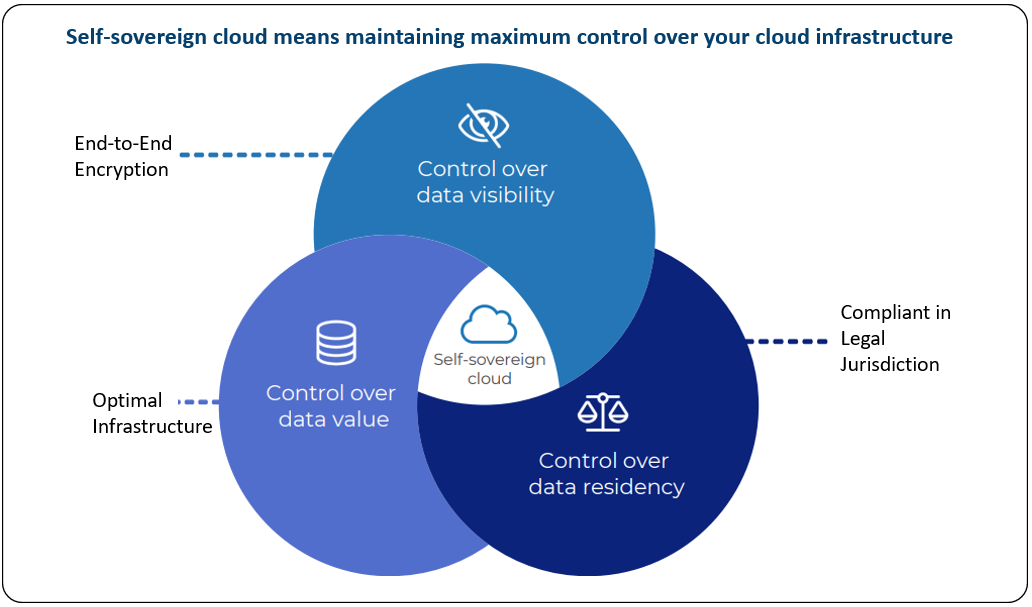
The pandemic had an uneven effect on the cloud computing industry. Some industries needed to ramp up digital capabilities to meet the growing demand of a world stuck at home, while others saw their infrastructures shrivel as conducting business became very difficult or impossible. The growth of public cloud services shrank for the first time in several years, but many expect a return to accelerating growth in a post-pandemic world (Analytics Insight). That leaves customers requiring a flexible infrastructure to meet the challenge of fulfilling peak demand while also controlling costs.
2020 also saw increasing complexity of the regulatory environment around cloud computing. The executive branch of the US government waded into the market to require Chinese-based firms to boost data residency in the US. A Court of Justice of the European Union ruling invalidated the EU-US Data Protection Shield, leaving organizations doing business in Europe to draft custom agreements around data sharing (McCarthy Tétrault). It’s anticipated other economies around the world have additional draft legislation on the table for data residency requirements.
Regulated industries demand stronger end-to-end encryption from cloud providers. Until this year, encryption was possible only while data was in transit and at rest, but now it’s possible for data to be encrypted while being processed. Google’s Confidential Computing launched a cloud service that allows virtual machines to remain encrypted while being processed.
IBM now offers an open-source toolkit for developers to start building with homomorphic encryption, which also allows data to be encrypted while in use (ZDNet). The combined effect is a greater focus on hybrid cloud infrastructure that can be managed by software. Customers want control over where their workloads sit from an infrastructure and geographic perspective. They also need their cloud management platforms to seamlessly integrate encryption, easily enforce policies, and receive recommendations on resources management. Machine learning will play a role in delivering those recommendations.
Human Benefits
Trust: Transparency in where data is stored and what it’s used for is required for customers to trust organizations as data custodians. Applying the same policies consistently to data despite the infrastructure will help inspire trust.
Experience: A proper hybrid infrastructure is a complicated environment, and determining the best management approach isn’t easy. Using machine learning to recommend how to optimize infrastructure alleviates one technical challenge faced by IT and allows them to focus on other strategic areas.
Resilience: A hybrid cloud approach that involves multiple public clouds not only provides organizations with a sound infrastructure to back a business continuity strategy but also creates the most flexibility for an unpredictable regulatory environment. Adapting to data residency requirements with a flexible infrastructure is preferable to other solutions to continuing business in a jurisdiction with a tough compliance regime, which could involve legal challenges or new business partnerships that wouldn’t otherwise be warranted.
Uncertainties
Regulatory battles. An uncertain regulatory landscape around the world leaves companies unsure of what new data residency requirements could be introduced in various regions. To simplify operations, companies with an international customer base will mostly choose to comply with the strictest set of rules governing them.
Antitrust lawsuits. Hyperscaler public cloud providers are facing antitrust lawsuits. Google faces one in the US, and Amazon faces one in the European Union. Litigation will likely stretch out for years with unclear implications for customers of the cloud services divisions of these firms.
Post-pandemic era. COVID-19’s grip on the global economy remains the dominant factor as we enter 2021. Whether efforts to distribute a vaccine or manage infections will be effective remains to be seen. If the post-pandemic era does begin, it will unfold one region and one industry at a time, leading to an uneven economic recovery.
Recommendations
To work toward infrastructure maturity that gives you control and flexibility in a hybrid cloud model, pursue initiatives that will realize these outcomes:
• Transparency in where your data is stored from a geographic and infrastructure perspective.
• Automated recommendations on how to best optimize workloads across several variables including performance, cost, security, and policy.
• True end-to-end encryption that includes encryption of data at rest, in transit, and while being used.
3. Digital Sustainability
Using digital technologies such as software and machine learning to drive emission reduction and cost efficiency.
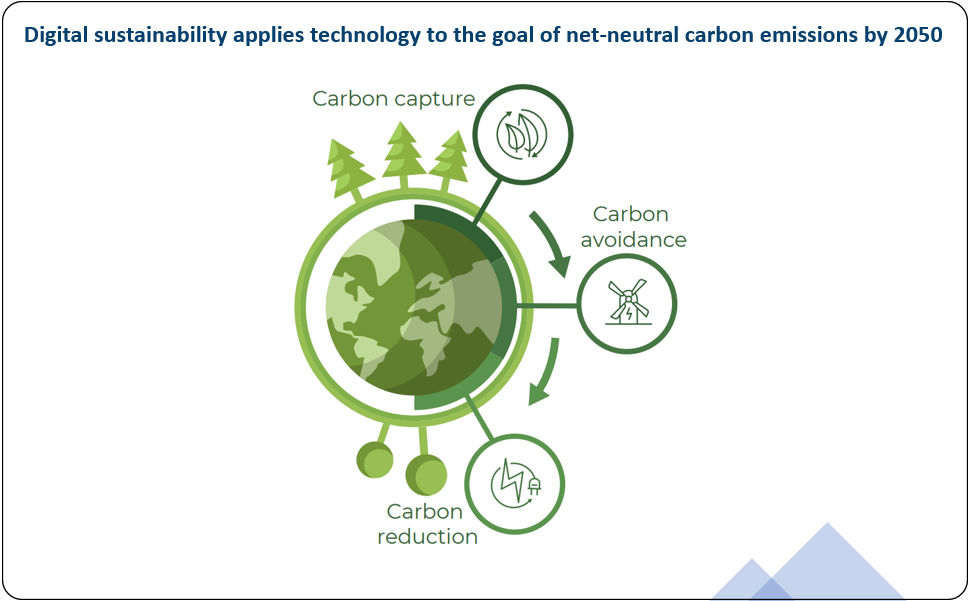
COVID-19 isn’t the only crisis gripping the world in 2020. The climate crisis still looms, and curbing the carbon emissions causing global warming will take decades of consistent effort and good policy making. In the past, one barrier to curbing global warming has been that reducing emissions was seen as contrary to business goals. Less emissions meant less energy use and slowing growth. But with catastrophic effects of climate change now looming unless the world can achieve net-zero carbon emissions in just 30 years’ time, the tide is turning. More businesses are embracing reductions in carbon emissions and making them a prominent part of their business strategies. Measures to reduce carbon emissions also result in cost savings on energy bills and a more resilient energy infrastructure. Large firms from various industries are committing to making their operations carbon neutral, including Amazon, Google, Nike, HSBC, Swiss Re, and Vancity (David Suzuki Foundation). Information and communications technology is often viewed as a contributor to global warming because of its required electricity use. But advances in carbon-free energy sources can reduce that impact. More importantly, digital technologies can have a major impact by helping organizations reduce their carbon emissions in other ways, with several technologies playing key roles.
Human Benefits
Trust: Digital tools tracking carbon emissions create transparency into an organization’s operations and demonstrate that it is accountable to its carbon emissions reduction goals.
Experience: People are more interested than ever in patronizing businesses that reflect their values. With customers interested in sustainable products, digital tools can help companies achieve carbon reduction goals and communicate them to customers, building the values-based relationship with them.
Resilience: Reducing carbon emissions and moving toward a carbonneutral future will help avert disruptive climate change that would negatively affect many people. Also, reduced energy usage often comes with cost savings, allowing people to
reinvest and create value elsewhere.
Uncertainties
Government commitments. The Paris Accord, which is motivating companies’ move to be carbon neutral, doesn’t include every country. There’s also no guarantee that signatories will remain committed. Recent years have demonstrated that a change in government can change a country’s commitment to the accord. If countries don’t cooperate, there will be less incentives for organizations to pursue the outlined goals.
Market for captured carbon. Extracting carbon from the atmosphere could help in achieving net-zero emissions, but at present the only model to do so is a costs-only model that would have to be funded by governments or charity. If a use can be determined for captured carbon and if a market can be created, organizations would have more incentives to pursue this highly technical activity.
5G’s true efficiency. While the 5G base stations have a new capability to turn off their power consumption while not in use, many will also operate on higher-spectrum frequencies that will require much more power output compared to 4G base stations. 5G will also require a greater density of nodes to operate on higher frequencies. There is no consensus on the true overall energy costs of operating 5G networks compared to 4G.
Source: IEEE Spectrum
Recommendations
To improve your organization’s digital sustainability, create initiatives that will yield these capabilities:
• Accurately measure and assign accountability for carbon emissions based on energy consumption and materials used by the organization.
• Estimate the carbon emissions created as a result of working with suppliers and other partners.
• Compare current-state IT operations to possible future-state scenarios on an energy consumption basis.
4. Machine Learning by Design
Harnessing machine learning as a core piece of the organization’s value proposition.
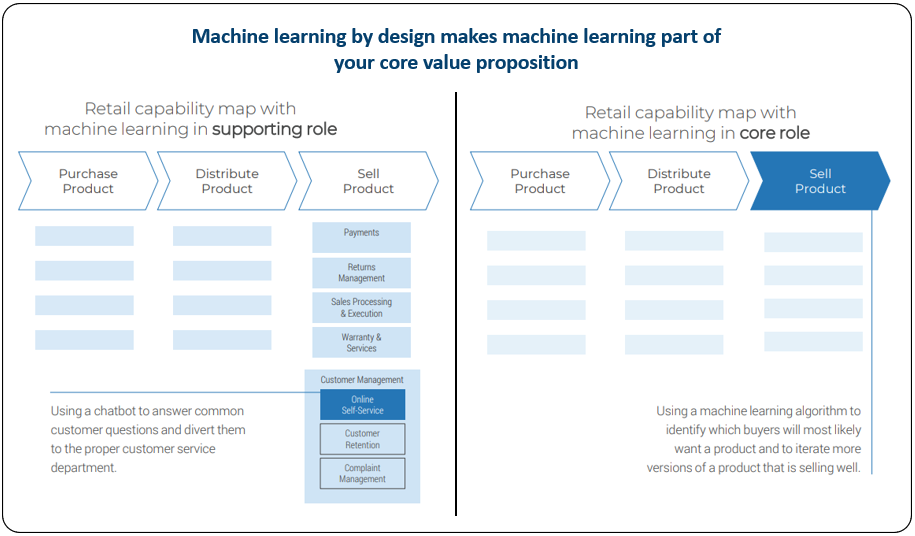
The exponential growth in unstructured data, development of specialized processors, and improvement of algorithms are combining to create tremendous potential for machine learning to be a transformational force. But current organizational structures inhibit it. Most businesses target processes that are lower in the value chain for improvement with machine learning. For example, many businesses now augment their customer service teams with a chatbot that uses natural language processing to triage incoming requests for help. While use cases like this provide good iterative improvements, they fall short of the transformational potential that’s possible. Disruptive businesses are integrating machine learning into the very top of their value streams. Using a platform structure, these organizations can build processes to operationalize AI effectively enough to tap its full potential. Designing for machine learning allows businesses to consider many more hypothetical solutions to the problems they are working to solve than people alone could muster. It can also accelerate proving out solutions (Mootee). To build machine learning into the top of their value streams, organizations require sufficient data sources, effective quality review, and agile functional capabilities (Management Solutions).
Human Benefits
Trust: Humans don’t trust algorithms, so transparency is required. People expect to know when AI is involved in a system and to understand how it works.
Experience: Machine learning has the potential to unlock creative capabilities. It can quickly scan data sets to determine a range of hypotheses, and it can reinforce which theories are being proven in practice.
Resilience: Humans often don’t see flaws in a system until it’s too late and a major error causes a disruption. Machine learning can quickly detect when a system is outside the normal range and can counteract it before it’s a problem.
Uncertainties
Bias. Machine learning algorithms are only as good as the data used to train them. A company that’s relying on machine learning for a crucial process could be vulnerable if it is training algorithms with datasets that are limited or flawed.
Talent. Skilled AI scientists are a scarce commodity on the hiring market. Most that are in the field either work in academia or for large technology firms in Silicon Valley. As a result, it’s difficult to hire talent capable of developing intellectual property in AI (Mootee).
Privacy. Where machine learning algorithms meet any customer or employee data, privacy laws in various regions regulate what data can be collected and for what purpose.
Recommendations
Improve your maturity in using machine learning as a strategic differentiator with initiatives that deliver these outcomes:
• Identify existing processes that could be rethought and improved upon by using machine learning.
• Collect and store unstructured data in a way that’s accessible and manageable.
• Create a central function for machine learning in your organization and have it collaborate with other lines of business as required.
5. Citizen Development 2.0
Enabling nontechnical contributors to use and create AI combined with low-code and no-code environments.

Low-code and no-code platforms enable nontechnical users to create custom business applications. Cloud platforms such as Microsoft Power Apps and Salesforce Lightning allow citizen developers to create process-specific solutions. Common apps developed in this category include reporting and administration tools such as calendar planning, quote generation, performance appraisal and reporting, and payment calculators (Betty Blocks). Popular citizen development platforms have recently extended their capabilities into AI. Since these platforms are backed by scalable infrastructure, it’s possible to support the training of new learning models and execute them on demand for end users. Capabilities added to these platforms allow nocode training of machine learning models, including cognitive vision models that can be trained with as few as 15 images. Users can also leverage machine learning for complete custom solutions such as chatbots. In Citizen Development 2.0 we’ll see the evolution and expansion of low-code and no-code platforms. Platform vendors have built the common data structures and user interfaces that enable business users to take their workflows and automate them across multiple applications. Now those capabilities will be surfaced at touchpoints even more accessible to users and will enable new AI capabilities (Verdict).
Human Benefits
Trust: Open or accessible data used for citizen development creates better transparency within an organization and among various stakeholders.
Experience: Nontechnical users are empowered to create their own technology solutions and automate tedious aspects of their workflow, freeing them up to apply themselves to higher value tasks.
Resilience: Creating tools that widen the available pool of contributors to technology solutions enables an organization to get the most value out of its entire workforce. Individuals can build on their existing skill sets to stay relevant in a modernizing economy.
Uncertainties
Artificial, but not intelligent. Hastily trained machine learning algorithms may appear sufficient to business users when tested in small samples but then be exposed as flawed or biased when used with a higher volume of data. Algorithms trained by nontechnical users are recommended for non-mission-critical tasks, and safeguards should be put in place.
Documentation lamentation. IT teams in enterprises are familiar with the pain involved in creating too many customizations for applications. What’s built differently from the mainstream must be maintained through internal resources. When business users start bolting on custom-built aspects to their applications, they may do so without proper documentation and create a challenge for others who need to do the same job in future or who otherwise interact with the workflow.
Shadow IT by another name. As no-code and low-code customization options enhanced by AI are integrated into popular business productivity software, such as Microsoft Teams, they will enter organizations that lack a plan to support them. In some instances, that will lead to IT barring users from these new features, and in others it will see business users creating new solutions that are redundant and unwieldy.
Recommendations
To better support citizen developers in your own organization and take advantage of new AI capabilities for nontechnical users, focus on initiatives that will:
• Identify where new AI capabilities are being added to existing business productivity software used by the organization and adopt these new capabilities quickly.
• Make organizational data as open and as accessible as possible while also respecting security and privacy concerns. Enhance awareness in your organization of what data is available.
• Create a governance structure that guides what should and should not be done by line-of-business users when building new software. Make IT resources available for coaching and support.
6. Venture Architecture
Developing and launching innovative new technology ventures from within
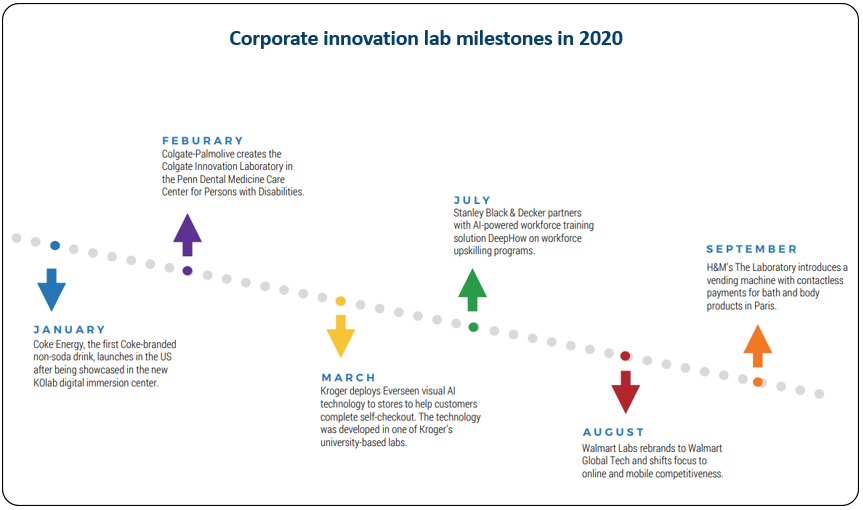
The global pandemic disrupted many industries in 2020, but perhaps none so severely as the retail industry. At least 27 major retailers went bankrupt over the year (Retail Dive). Retailers had to adapt to a digital-first model or face a total stoppage of business in markets affected by government lockdowns. Retailers that succeeded in rapidly adapting did so because embedded innovation labs launched new ventures. By having the internal capability to look at the opportunities presented by the market disruption instead of just reacting to the challenges, these retailers were able to meet skyrocketing e-commerce demands and facilitate touchless retail experiences appropriate for physical shopping during a pandemic. A business may look at dipping venture capital spending and think that it’s less likely to face disruptive new startups as competition in the near term. But previous recessionary times show that while the size of venture capital deals are diminished, they are more numerous. Necessity is the mother of invention, and there is a lot of need in the world right now. Startups remain a competitive threat, as do major platform companies eager to diversify their businesses even further. For example, Amazon is considered a threat to enter several new markets, including logistics, online groceries, pharmacy, payments, and merchant loans (“The 9 Industries Amazon Could Disrupt Next,” CB Insights, 2020). Venture architecture is the capability to respond to market disruption and remain competitive. Successful firms can create new ventures by pairing their resources and top talent with external partners. This innovation process can take on a variety of structures, from an internal incubator to a digital lab to a satellite innovation hub or even a shared community combining multiple organizations.
Human Benefits
Trust: Collaborating with an external community requires more transparency, and more transparency leads to stronger trust between stakeholders. Organizations can further establish trust by creating accountability through inclusive governance structures that involve a defined community.
Experience: By designing from the customer’s perspective when creating new products and services, organizations can create more satisfying solutions that make the customer’s life easier or less costly. This is balanced against the organization’s internal view of its goals and capabilities.
Resilience: Working on new approaches to the market before current business models decline helps an organization avoid a crisis where urgent change is needed to avoid catastrophe. Continuous innovation includes training people with new skill sets and expanding their perspectives, setting them up for success in their careers.
Uncertainties
Three tensions must be navigated for organizations pursuing reinvention through venture architecture:
The tension of disruption. There are no guarantees when it comes to disruptive innovation efforts, and a long-term investment can take years to yield real returns. That’s opposed to the need for immediate return on investment and a quick path to revenue. The pressure to show short-term results is the main reason that companies are more comfortable pursuing iterative innovation.
The tension of perspective. An organization has a much different view of itself than customers do. It’s difficult for employees to remove themselves from the institutional knowledge of their organization and truly understand the customer perspective. Involving customers and other stakeholders in the innovation process is crucial.
The tension of inclusion. The trick to venture architecture is to have a group that exists inside and outside of the organization at the same time. The contributors must be aware of the organization’s culture and strategy while also having enough space to bring in new ideas that wouldn’t have been considered otherwise. The right balance has to be maintained to ensure that ideas aren’t so wild that they aren’t accepted but also aren’t so ordinary that they don’t bring anything new to the table.
Recommendations
To improve your organization’s maturity toward launching new digital products and services, focus on initiatives that will:
• Bring in fresh ideas from an external community and expose employees to new ways of thinking about their industry.
• Partner with like-minded organizations that will strengthen your effort to maintain relevance to your customers.
• Document the customer journeys of different types of customers that interact with your organization.
References
Info-Tech Research Group – 2021 Tech Trends Report.
DilettUX, as a Info-Tech´s certified partner, can help you to define and implement initiatives aligned to the 2021 tech trends. Contact us!


